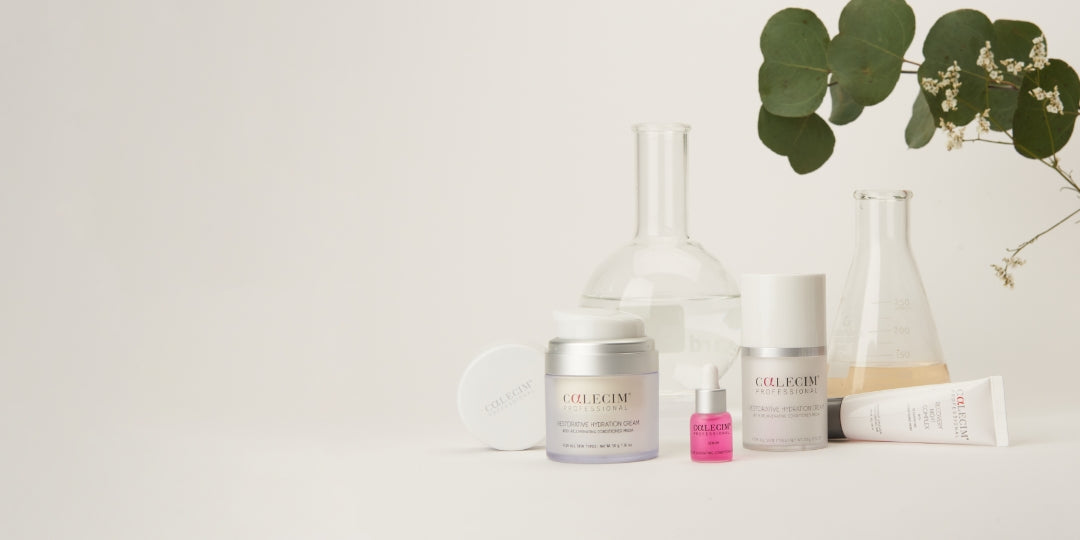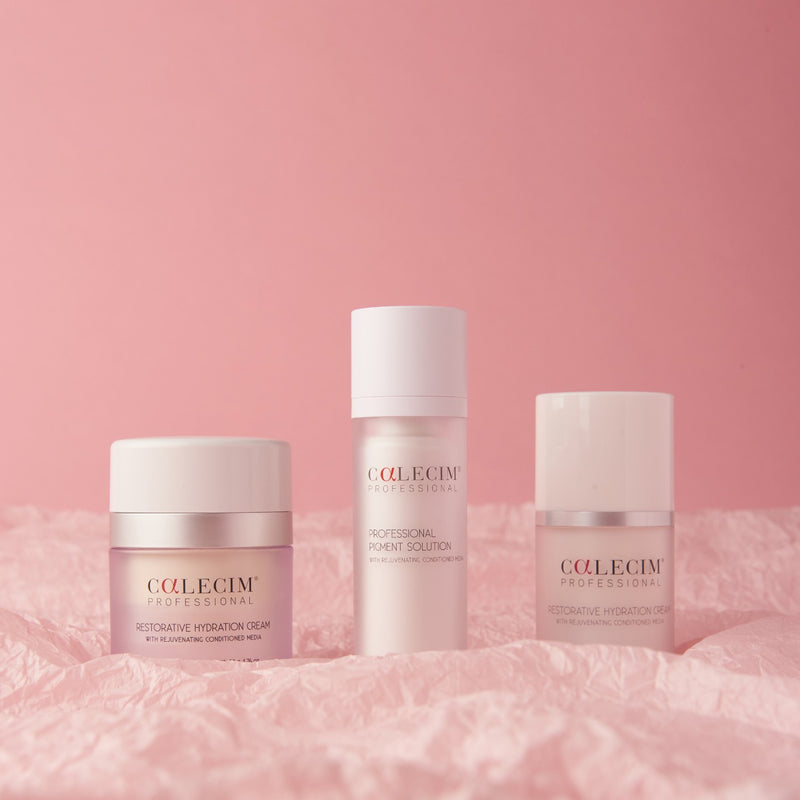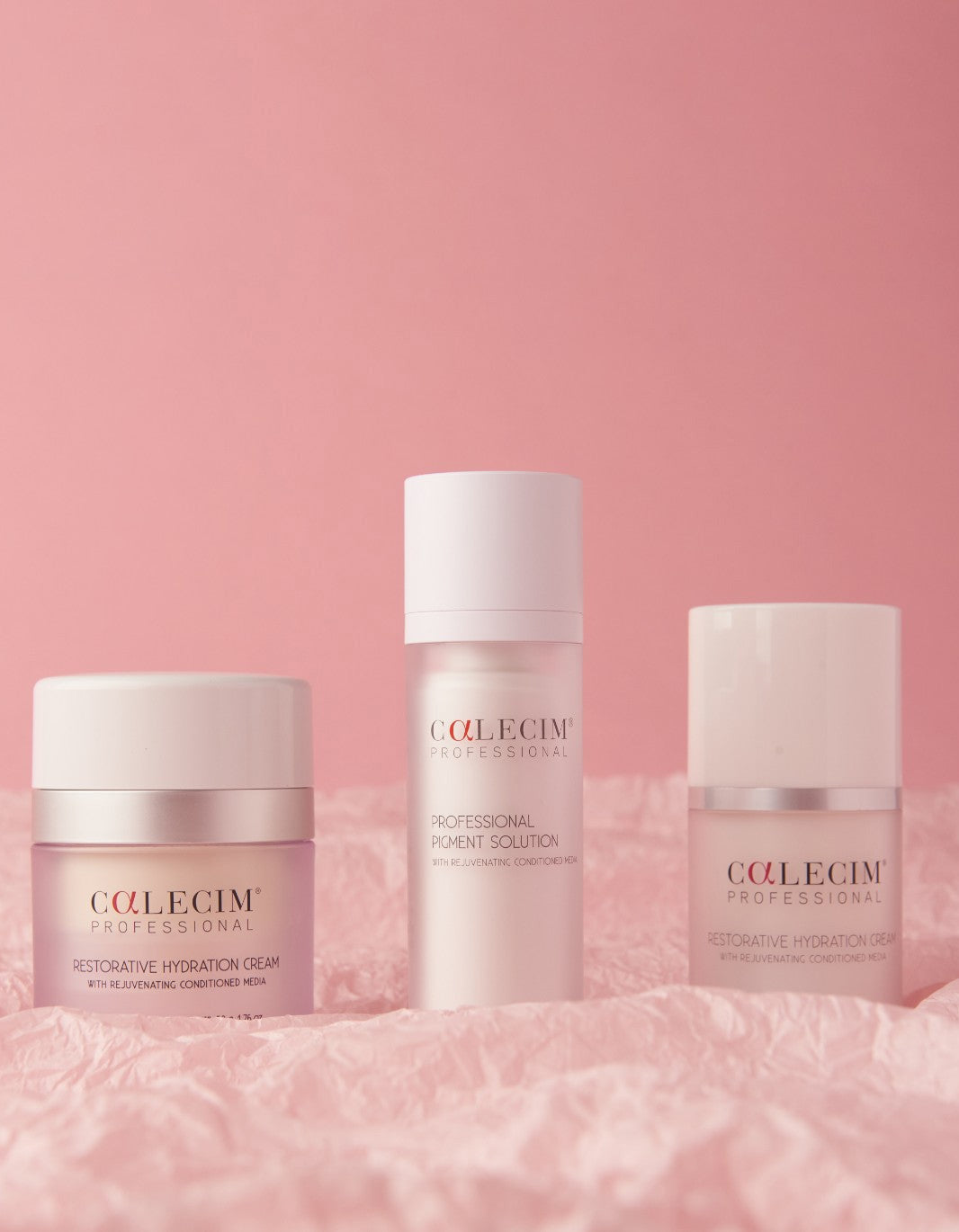At last, a proven and affordable solution for menopausal hair loss
For many women hair thinning carries a stigma that prevents them from discovering effective treatments. As menopause becomes a hot topic however, new discoveries are being made to treat this form of hair loss.
As seen in

There are at least 34 symptoms of menopause according to the Menopause Charity. And while most of us are aware of the hot flushes and brain fog, there’s a less talked about side effect that can be confidence crushing.
Hair loss occurs in nearly 50% of women in the menopause transition. And yet, for many women hair thinning carries a stigma that prevents them from discovering effective treatments. According to a 2016 poll by Ipos Mori for The British Menopause Society, one in two women aged 45-65 had gone through the menopause without seeking help from a healthcare professional.
However in recent times the menopause has been a hot talking point, driving a market for over the counter solutions from dedicated menopause skincare to volumizing hair treatments. Nevertheless hair shedding has historically been difficult to treat - surgical interventions have improved but they are expensive and come with significant downtime.
What causes hair loss in menopause?
From perimenopause onwards hormonal fluctuations (largely a drop in estrogen) impact the hair follicle resulting in hair thinning and a change in texture, while reduced blood flow reduces hydration creating a greater need for scalp nourishment. Dr. Manav Bawa, Medical Director and Aesthetic Physician at the Time Clinic in London, says hair thinning in women can begin as early as her late 30s.
He comments: “We are finding that menopausal symptoms, including hair loss, starts much earlier than we first thought. Thankfully as a society we are talking about menopause a lot more now, therefore women are better informed.”
Even so, he adds, overall women are waiting too long. “It’s much easier to tackle hair loss if you start treatment the moment you notice the first sign that your hair is thinning whereas typically patients come in at the point it begins to affect their self-esteem.”
Menopausal hair loss typically starts with excess shedding, mainly in the middle parting and at the crown, otherwise known as androgenic alopecia (female pattern hair loss). However 75% of Dr Bawa’s premenopausal patients also present with hair thinning in the temple area. “My feeling is that temporal hair thinning happens first followed by the mid-section and crown. Therefore if you can seek treatment early there’s a better chance of catching hair loss before it’s visibly noticeable.”
It begins with lifestyle
Dr Bawa begins with a thorough consultation followed by a blood panel to exclude any underlying health issues or vitamin deficiencies that could be contributing to hair shedding. “It’s important that anyone experiencing hair loss looks at their lifestyle. Anything from stress to a poor diet can contribute to hair shedding so it’s key to take a holistic outlook as the results will be better the healthier you are,” he says pointing to the idea of implementing micro gains from optimizing sleep to eating an anti-inflammatory diet.
“On a macro level we are consuming too much ultra processed foods. Meanwhile stress is ever present which can put a shock on the system - as can dramatic weight loss from taking GLP-1 medication. Topical hair growth protocols are an effective solution, but the results can be enhanced with appropriate lifestyle improvements,” he explains.
The menopause hair loss study
Dr. Bawa is conducting an ongoing study on twelve perimenopausal patients ranging from 37-54 years old with mild to moderate hair loss, using the Calecim Professional Advanced Hair System.
Combining derma-stamp microneedling with Calecim Professional’s hair serum, the Advanced Hair System harnesses the power of PTT-6, a proprietary ingredient rich in over 3,000 proteins, growth factors, exosomes and anti-inflammatory cytokines.
The first treatment was performed in the clinic to kickstart the process. Medical practitioners like Dr Bawa can safely apply the derma-stamp tool at a deeper level (1.25mm) which allows the ingredients in the serum to properly penetrate the scalp and hair follicles.
Next participants were asked to perform five weekly treatments at home at a depth of 0.5 mm using the derma-stamp tool and the Calecim Professional hair serum. Microneedling helps the serum to be fully absorbed simultaneously creating a mild controlled injury to stimulate repair and collagen synthesis.
A review of the results were conducted at six and 12 weeks which Dr. Bawa presented at the 2025 Aesthetic and Anti-Ageing Medicine World Congress in Monaco.
“I've seen a difference in every patient so far,” confirms Dr Bawa adding that the results go beyond the data. “The women I’ve reviewed tell me their confidence has improved. They’ve received comments from their hairdresser and friends who are saying: ‘your hair looks thicker and more healthy’. But mostly participants tell me they feel more confident which is really rewarding.”
While results are impressive, the trial is ongoing. “Some of the women have seen a small amount of regrowth and others have experienced a big difference, but I expect there to be even more of an improvement a couple of months from now. Generally it's around the six month mark that we're seeing the best outcomes,” states Dr Bawa who emphasises that even though the rate of hair growth varies from patient to patient depending on hair type, lifestyle and the severity of hair loss, the treatment is exceeding expectations.



 Results after 12 weeks of treatment. First treatment was administered in clinic and the rest at home
Results after 12 weeks of treatment. First treatment was administered in clinic and the rest at home
Comparing treatments
The gold standard solution for hair loss is a hair transplant, but for most people surgery is too heavy an investment, physically and financially.
PRP (platelet rich plasma) is a less invasive clinic treatment that utilizes the patient's own blood to naturally stimulate regrowth. Blood is drawn, purified and spun in a centrifuge to extract growth factors and nutrients which are injected back into the scalp to stimulate the repair process. However, while PRP is good for a number of issues from injuries to facial rejuvenation, outcomes are variable depending on the age and health of the patient.
The topical treatment Minoxidil is a class of hair loss drugs typically used to treat male and female pattern hair loss. Minoxidil is considered a viable treatment option with mild to moderate results but with all drugs it comes with potential side effects.
However Calecim’s Advanced Hair System is a topical drug-free solution that is showing comparable outcomes to PRP and hair loss drugs with additional benefits. “Calecim Professional’s hair serum has a number of benefits. The cytokines help reduce inflammation which makes the healing process much quicker. Whereas the exosomes and growth factors improve signalling between the cells, prompting the hair follicle to grow thicker, fuller hair naturally,” states Dr. Bawa.
He adds: “Prior to using Calecim I was performing a lot of PRP (platelet rich plasma) but most of my patients found it extremely painful and the results are varied.
“The results I get from Calecim are equal if not better than PRP - plus it’s more convenient and affordable. Patients can come into the clinic or they can have an initial consultation and apply the treatment at home for much less than a course of PRP.”
Patient testimony: “6 weeks and the results are incredible. I can't actually believe it. I thought, with perimenopause, that I was going bald and would be for life. I was so self-conscious and now feel like my hair will indeed go back to how it used to be. I am amazed and so, so happy.”
- CALECIM® User, age 40-49































